
Lights Out is an American old-time radio program devoted mostly to horror and the supernatural.
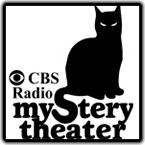
CBS Radio Mystery Theater is a radio drama series created by Himan Brown that was broadcast on CBS Radio Network affiliates from 1974 to 1982, and later in the early 2000s was repeated by the NPR satellite feed.
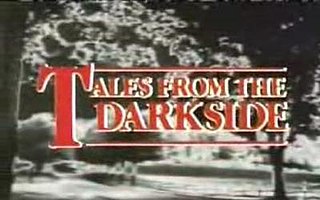
Tales from the Darkside is an American anthology horror television series created by George A. Romero. A pilot episode was first broadcast on October 29, 1983. The series was picked up for syndication, and the first season premiered on September 30, 1984. The show would run for a total of four seasons.

Tales from the Crypt, sometimes titled HBO's Tales from the Crypt, is an American horror anthology television series, which ran for seven seasons on the premium cable channel HBO from June 10, 1989, to July 19, 1996. The show's title is based on the 1950s EC Comics series of the same name, published by William Gaines and edited by Al Feldstein. Most of the program's episodes are based on stories that originally appeared in that comic or other EC Comics of the time, The Haunt of Fear, The Vault of Horror, Crime SuspenStories, Shock SuspenStories, and Two-Fisted Tales.

Thomas Nigel Kneale was a Manx screenwriter who wrote professionally for more than 50 years, was a winner of the Somerset Maugham Award, and was twice nominated for the BAFTA Award for Best British Screenplay.

Tales from the Crypt is a 1972 British horror film directed by Freddie Francis. It is an anthology film consisting of five separate segments, based on the Tales from the Crypt short stories by Al Feldstein, Johnny Craig, and Bill Gaines. The film was produced by Amicus Productions and filmed at Shepperton Studios in Surrey, England.
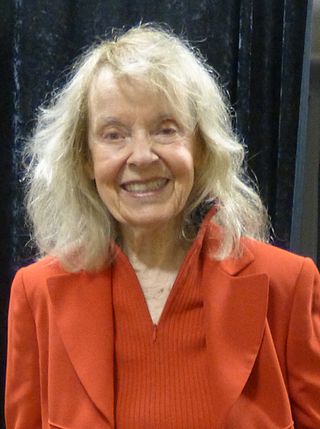
Janet Waldo was an American radio and voice actress. In animation, she voiced Judy Jetson in various Hanna-Barbera media, Nancy in Shazzan, Penelope Pitstop, Princess from Battle of the Planets, and Josie in Josie and the Pussycats. On radio, she was the title character in Meet Corliss Archer.

Let's Pretend, created and directed by Nila Mack, was a CBS radio series for children. Prior to being renamed Let's Pretend, the program had a variety of titles and formats. In its most famous form, Let's Pretend, the Peabody Award-winning series ran from 1934 to 1954.
Tales from the Cryptkeeper is an animated horror children's television series made by Canadian studio Nelvana. The series was broadcast on ABC in the United States, and on ITV in the United Kingdom.

The Vault of Horror was an American bi-monthly horror comic anthology series published by EC Comics in the early 1950s. Along with Tales from the Crypt and The Haunt of Fear, it formed a trifecta of popular EC horror anthologies. The Vault of Horror hit newsstands with its April/May 1950 issue and ceased publication with its December/January 1955 issue, producing a total of 40 issues.
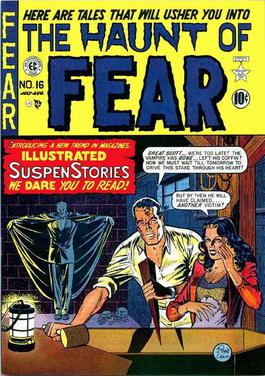
The Haunt of Fear was an American bi-monthly horror comic anthology series published by EC Comics, starting in 1950. Along with Tales from the Crypt and The Vault of Horror, it formed a trifecta of popular EC horror anthologies. The Haunt of Fear was sold at newsstands beginning with its May/June 1950 issue.

Crime SuspenStories was a bi-monthly anthology crime comic published by EC Comics in the early 1950s. The title first arrived on newsstands with its October/November 1950 issue and ceased publication with its February/March 1955 issue, producing a total of 27 issues. Years after its demise, the title was reprinted in its entirety, and four stories were adapted for television in the HBO's Tales From The Crypt.
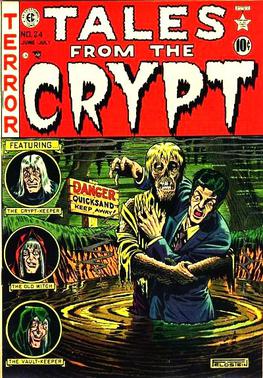
Tales from the Crypt was an American bi-monthly horror comic anthology series published by EC Comics from 1950 to 1955, producing 27 issues. Along with its sister titles, The Haunt of Fear and The Vault of Horror, Tales from the Crypt was popular, but in the late 1940s and early 1950s comic books came under attack from parents, clergymen, schoolteachers and others who believed the books contributed to illiteracy and juvenile delinquency. In April and June 1954, highly publicized congressional subcommittee hearings on the effects of comic books upon children left the industry shaken. With the subsequent imposition of a highly restrictive Comics Code, EC Comics publisher Bill Gaines cancelled Tales from the Crypt and its two companion horror titles, along with the company's remaining crime and science fiction series in September 1954.

An anthology series is a radio, television, film, or video game series that presents a different story and a different set of characters in each different episode, season, segment, or short. These usually have a different cast in each episode, but several series in the past, such as Four Star Playhouse, employed a permanent troupe of character actors who would appear in a different drama each week. Some anthology series, such as Studio One, began on radio and then expanded to television.
Thomas Lee Wallace is an American film director and screenwriter. He is best known for his work in the horror genre, directing films such as Halloween III: Season of the Witch and Fright Night Part 2 and also directing the 1990 television miniseries adaptation of Stephen King's epic horror novel It. He is a long-time collaborator of director John Carpenter, receiving his first credit as art director on Carpenter's directorial debut Dark Star. Along with Charles Bornstein, he edited both the original Halloween film and The Fog.
La Vénus d'Ille is a short story by French writer Prosper Mérimée. It was written in 1835 and published in 1837. It tells the story of a statue of Venus that comes to life and kills the son of its owner, whom it believes to be its husband. This is based on a popular medieval story, of which William of Malmesbury wrote the earliest known version.

Howard Nostrand was an American cartoonist and illustrator best known for his 1950s comic book stories and his 1959-60 syndicated comic strip Bat Masterson, based on the television series.
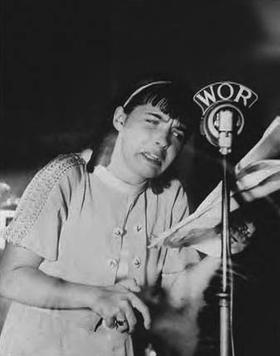
Miriam Wolfe was an American actress, director, producer and writer, who worked in theatre, television and radio from the 1920s to the 1950s. She is mainly remembered for her character roles on radio's weekly Let's Pretend.

The Witch's Tales was an American pulp magazine edited by Tom Chadburn which published two issues in November and December 1936. It was a companion to a radio program, called The Witch's Tale, which had begun broadcasting in May 1931. With the exception of the lead story in each issue, all the stories were reprints from the American edition of Pearson's Magazine. Alonzo Deen Cole, who wrote the radio series, contributed one lead story, and provided the plot for the other. The authors of the reprint stories included George Daulton, Wardon Allan Curtis, William Hamilton Osborne, and John C. Haywood.

Two-Fisted Tales is a 1992 American made-for-television anthology horror film consisting of three separate segments, based on the EC Comics publication Two-Fisted Tales. Only one of the stories is actually adapted from a story appearing in an issue of EC Comics.

















